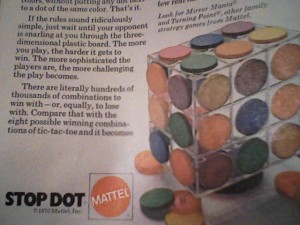David Rorvik was a medical reporter for Time and the New York Times who dreamed of being another Asimov–a writer who could readily shift from nonfiction to fiction and back. In 1978, he seemingly combined both genres, writing the book In His Image: The Cloning of a Man, which purported to tell the true story of how he traded on his science journalism bona fides to organize the actual cloning of a 67-year-old man he called “Max.” It didn’t pass the smell test nor more rigorous medical probings, but for awhile Rorvik got the attention he desired. People magazine even felt the need to run an interview with Nobel Prize winner James D. Watson to dispel the sensation. An excerpt:
“People:
Have you done any cloning?
Watson:
Not exactly. Here at the Cold Spring Harbor Laboratory we have genetically rearranged various viruses and bacteria as part of our medical research. In fact, we have been able to create entirely new types of DNA molecules by splicing together the genetic information from different organisms—recombinant DNA. This will lead, among other things, to the manufacture of human insulin, a major medical breakthrough.
People:
In your opinion, has a human being been cloned?
Watson:
Absolutely not. This is pure science fiction silliness.
People:
When might we see the cloning of a man?
Watson:
Certainly not in any of our lifetimes. I wouldn’t be able to predict when we might see the cloning of a mouse, much less a man.
People:
Is David Rorvik a fraud?
Watson:
Let’s just say that he proposed a pornographic book on cloning to a New York publisher back in 1970. There are elements of that novel in his supposedly nonfiction book, In His Image.
People:
Could the experiments on human cloning described in Rorvik’s book take place without the knowledge of the scientific community?
Watson:
There are just too many problems, too many major obstacles to be overcome before we clone a man. Each time there was such an advance, it would be big news. Science moves ahead by rather discrete steps, but even when small progress is made, we generally hear about it.
People:
How far along has the technology of cloning progressed?
Watson:
Well, we’ve been successfully cloning frogs for about 25 years. The unfertilized frog egg is removed, then the nucleus is destroyed by ultraviolet radiation. A cell is taken from a tadpole and surgically inserted into the nucleus, using a pipette. The cell begins dividing to form a blastula—a hollow sphere made out of a single layer of cells—which eventually becomes a frog genetically identical to the original.
People:
Has any life form higher than a frog been successfully cloned?
Watson:
Not to my knowledge. Cloning mammals is a long, long way off.”




